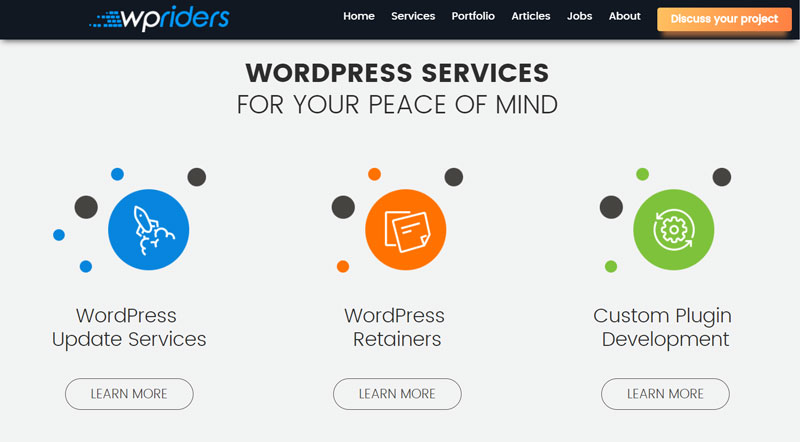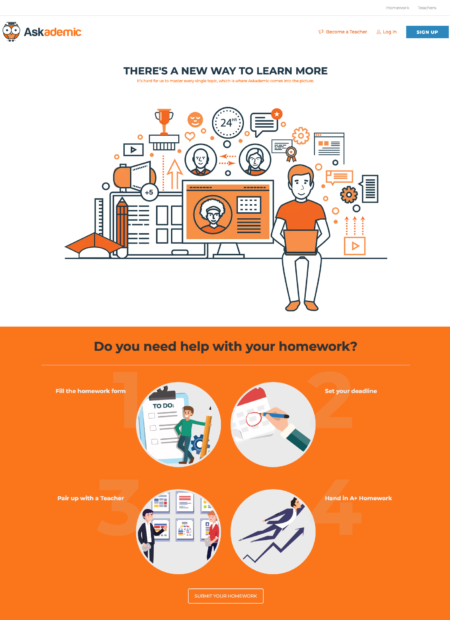Last summer, I had the chance to attend a conference given by Marius Vetrici at WordCamp Lausanne 2018. His presentation was a wonderful insight into the way they handle project pricing at his agency specialized in WordPress. As a follow-up, I asked him a few questions for Designer Daily’s readers.
Could you introduce your company and yourself to our readers?
My name is Marius Vetrici and I’m the Founder and General Manager at
We specialize in WordPress customizations with a focus on building custom plugins and WordPress integrations with other APIs. Besides that, we enjoy working with entrepreneurs who want to launch their next Uber or Airbnb service, that is, their next web platform or marketplace or subscription service.

What were the key challenges you had to tackle when going from freelancer to agency?
That’s a great question. Indeed, I started as a freelancer and after one year of freelancing I scaled up my business and started hiring a team. Today we are 8 people, but back when I first kicked off this project I had to deal with a couple of challenges. Some of the most important and worth mentioning are:
- ensuring we have the right amount of work; that is, the right quantity and the right type of projects. Positioning, that is, deciding what do we want to do and for whom plus lead generation is one of the toughest things I had to wrestle with.
- ensuring enough cash reserve that would cover our salaries for 3 months; luckily I was able to access some European Union funds that helped me build this cash airbag that would screen us from ups and downs
- hiring the right Project Managers / Customer Success Managers – initially I thought I need a non-technical PM. Big mistake for a technical agency like ours.
Can you explain to our readers the basics of pricing a WordPress project?
Sure, I love this topic as I’ve spent many years researching it and preparing for my Ph.D. Whenever you price and estimate a project there are a couple of things you don’t know about that project, which makes the project risky. Now, there are 3 types of knowns and unknowns:
- things that you know – these are easy to estimate and hence to price
- known unknowns – you know you have a blind spot here and you need to work it out; these are harder to estimate and to price
- unknown unknowns – these are your blind spots you are not even aware of; these are the riskiest.
Your goal is to uncover as many “unknown unknowns” as possible; to clarify those known unknowns and to estimate the things that you know.
Long story short, I recommend breaking down all the projects into small bite size tasks of max 6 hours and estimating those. While you are doing this, do your best to be as mindful as possible, so as to observe as many details and factors as possible.

If you cannot break it down to 6-hour tasks and are inclined to assigned larger estimation values, that’s a sure indicator you have an
Next, once you have the breakdown and the hours, you can multiply that by your hourly rate.
One thing caught my attention during your presentation, pricing tasks never done before. How do you go about that?
Most of our tasks are like in Star Trek movies – where no one has gone before. The way we deal with them is:
- we apply the above principles, by breaking the new project into small 6-hour bite-sized pieces
- whenever that’s not possible, we run short Technical Discovery sessions that have the goal of eliminating a technical risk and providing visibility over a part that is more risky or unknown. The deliverable of a Technical Discovery Phase is a Micro prototype that cracks the hard nut by providing a solution.
We all make mistakes, how do you handle cases where you under-estimated the time a project would take?
If the agreement with the client is to adjust the project size as we do the work and uncover more areas that need our attention, we adjust the price accordingly
We do this by calculating our mean estimate error over the last 3 months and applying it as a coefficient for the new projects. In those super rare cases when the estimate is really off, we might address this with the client and try to split the estimated error between ourselves. Or, we may eventually put a stop loss and cancel the project altogether + refund the client.
However, the above estimation approach worked ok So far since out of more than 1050 projects finished up to date we have never had to offer a refund because of a very bad estimate.

